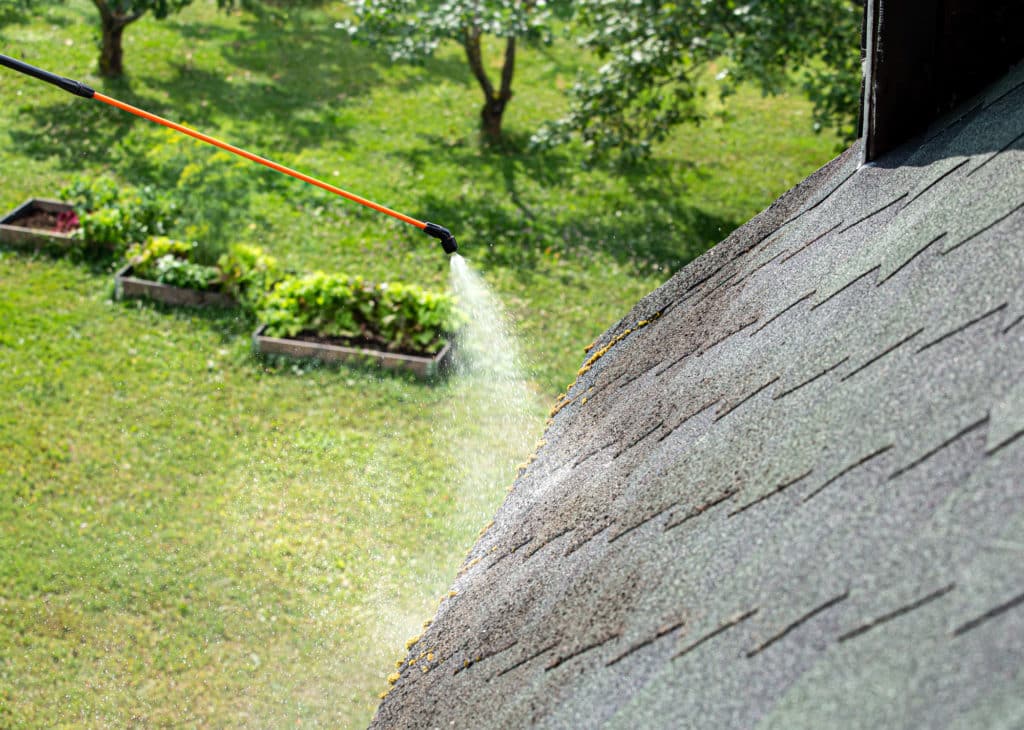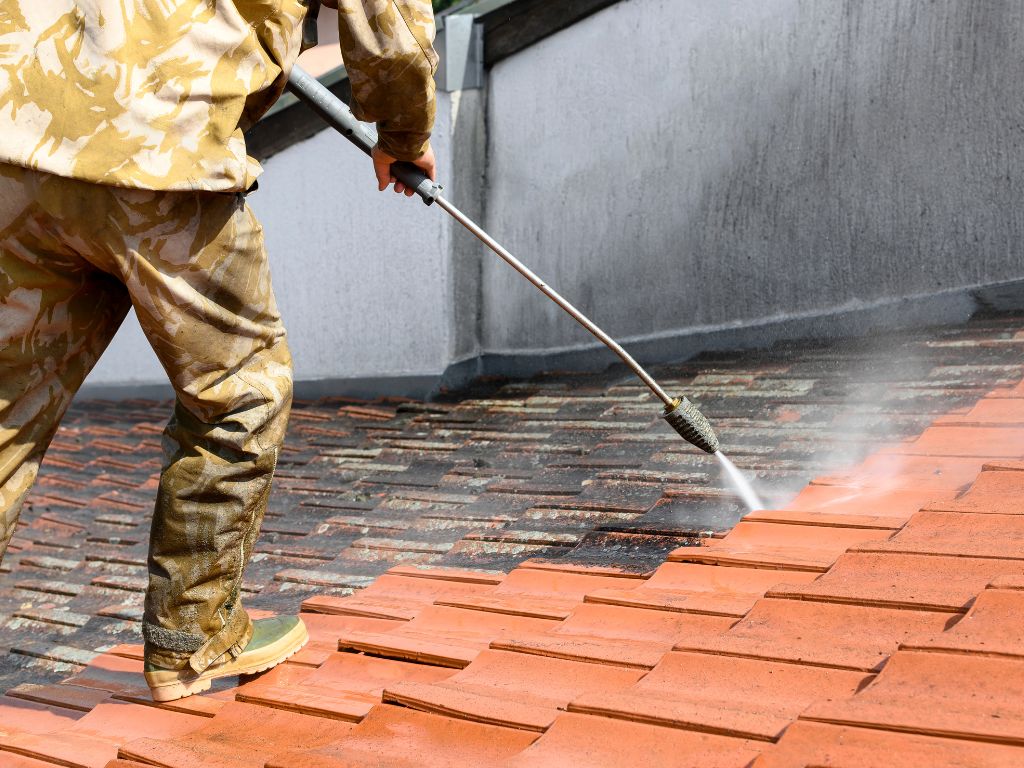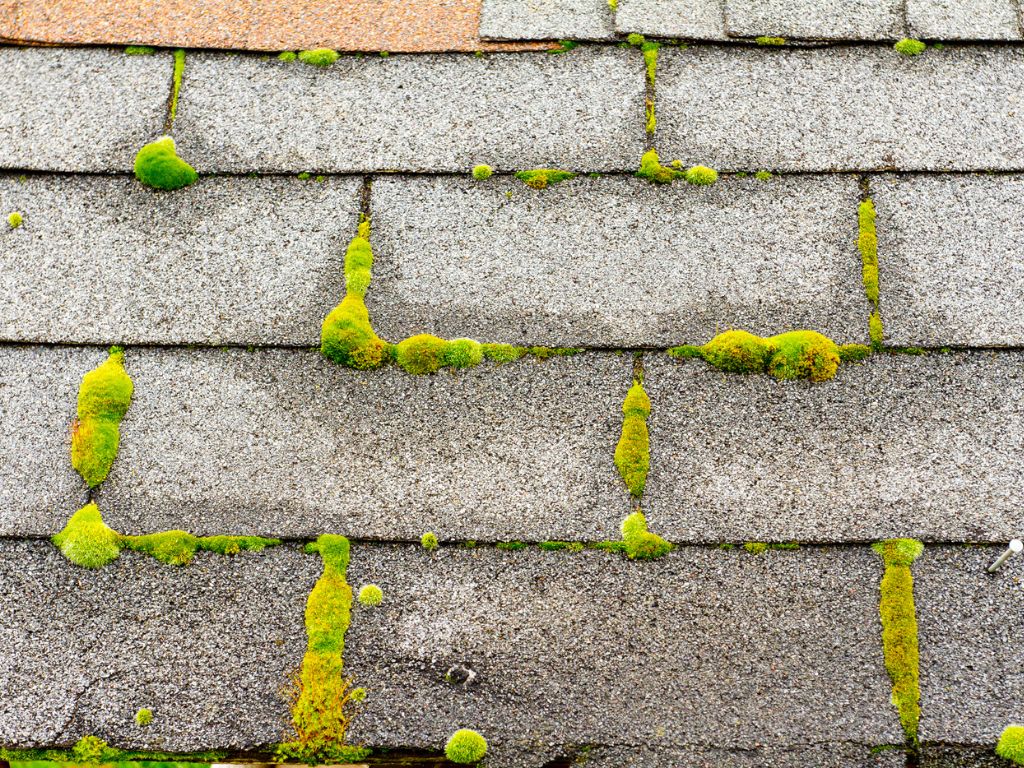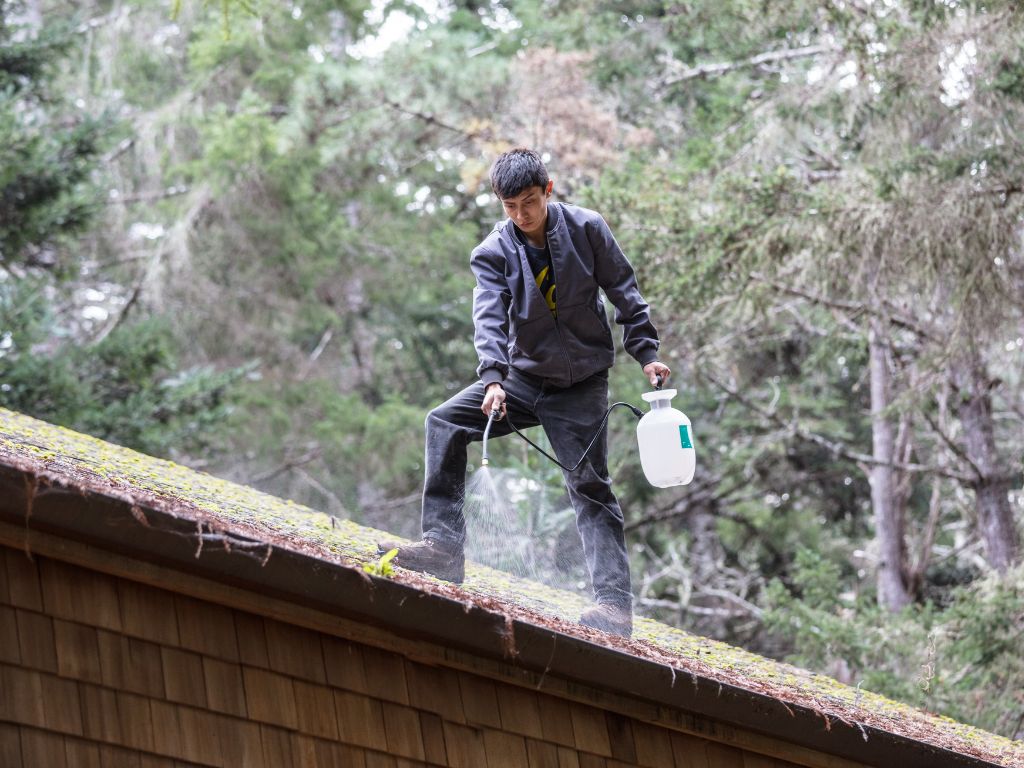The Do’s and Don’ts of Cleaning a Roof
Does your roof look worse for wear lately? Chances are it needs some TLC.
Although your roof often goes unnoticed, it is the home’s primary defense to protect your home from external elements. Like everything else in your home, it eventually gets dirty, and experiences wear and tear.
Before you reach for your cleaning supplies, know this: washing your roof requires experience, skill, and precision. If you aren’t careful, you could easily wind up inflicting permanent damage on the structure – or worse, you might seriously injure yourself.
That’s why we’ve written this post to help you get on the right track and prevent dangerous expensive mistakes. We’ll walk you through the most effective roof cleaning methods with some critical dos and don’ts.
1. DO Use a Chemical Sprayer

You might have noticed dark stains or patches growing on your roof. According to the Asphalt Roofing Manufacturers Association, it’s most likely roof algae (technically a bacteria). This dark or shaded bacteria generally leads to moss and lichen growth.
Because algae and moss can negatively impact your shingles, removing them as quickly as possible is crucial.
We recommend using a low-pressure chemical sprayer to rid your roof of contaminants. You can use a carefully crafted mixture of chemicals (typically with chlorine bleach, as recommended by roof manufacturers) to clean up the mess. The goal is to be gentle and remove the nasty contaminants without damaging shingles, removing granules, or damaging tile or slate.
At Pacific Exterior, we use a unique ‘Safe Wash’ technique and quality custom-blended cleaning solutions to soft-wash your roof and eliminate all signs of mold, mildew, bacteria, lichen, and moss. Our results last much longer than traditional roof cleaning methods and will not damage your property.
Moreover, we always conform to manufacturer guidelines for proper cleaning procedures that uphold your homeowners’ insurance requirements. With us in your corner, you’ll know your roof is in good hands (and that we’ll eradicate mold, algae, and other contaminants).
2. DON’T Use a Pressure Washer

If you’re thinking about using a pressure washer to blast away surface sediment on your roof, we’re here to tell you that it’s a bad idea.
Many homeowners choose to pressure wash their roofs because it appears to remove stains and mold quickly. However, these people fail to account for how the pressure also removes protective granules from asphalt shingles and can irreversibly destroy the cementitious color coat on concrete tiles. Pressure washing also highly increases the likelihood of broken concrete, clay tile, and slate roofing.
That’s not all. Powerful pressure washers can also generate cracks and holes in your roof, resulting in leaks, water damage, and exposure to the elements. Plus, the pressurized water can compromise other roof features, such as vents, skylights, and solar panels.
As if this wasn’t enough reason to steer clear of them, pressure washers can spread the moss and algae to other parts of your roof instead of removing them. This only perpetuates the problem further.
Overall, pressure washing your roof does more harm than good, paving the way for possible long-term headaches and expensive repairs. It’s best never to use this tool, even on stubborn roof stains, as nearly all roofing manufacturers stipulate.
3. DO Clean Your Roof Proactively

Far too often, homeowners wait until their roof is covered in moss and/or algae before jumping into action. The problem is that the longer you let these contaminants sit unattended, the more damaging they become.
The biggest problem with roof moss and algae is that they retain water. Moisture trapped in your roofing system can wreak all sorts of havoc on your home, contributing to:
- Permanent stains
- Deteriorated shingles
- Roof leaks
- Wood rot
For homeowners who are moving out of their property, proactively cleaning your roof is crucial for keeping the roof in optimal condition and preventing future damage. Ignoring the problem can also lead to bigger expenses in the future, making proactive roof cleaning the best option. Additionally, a clean roof instantly boosts your home’s curb appeal, making it more appealing to potential buyers.
4. DON’T Attempt the Cleaning Alone

Roof cleaning is dangerous, especially when attempted by amateurs. Even if you don’t think your roof is too high or slanted, you might change your tune once you’re up there. Falling is the number one cause of homeowner death. Falls from roofs accounted for more than 108 deaths in 2020 – and your risk is even higher if you’ve never cleaned a roof before.
Furthermore, mixing chemicals to create your roof cleaning solution can also be dangerous. You’ll need proper personal protection equipment (PPE) and tools to ensure nothing corrosive touches your skin.
The last thing you want is to get hurt from a roof-related accident. That’s why we strongly advise having a professional roof cleaning contractor handle the job. As seasoned and trained professionals, our Pacific Exterior team knows how to clean a roof safely and efficiently.
Keep a second set of hands on deck if you must conduct the cleaning yourself. Ask a friend or family member to watch over you while traversing the roof. Wear well-fitting shoes with slip-resistant rubber soles to retain a firm grip on the surface. If you feel uncomfortable at any point, climb down immediately.
.jfif)


Comments
Post a Comment